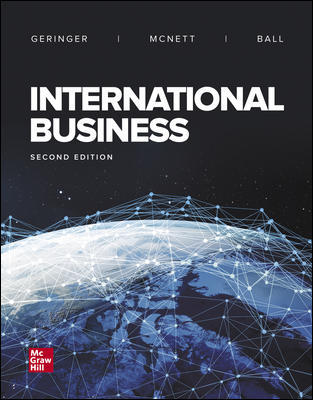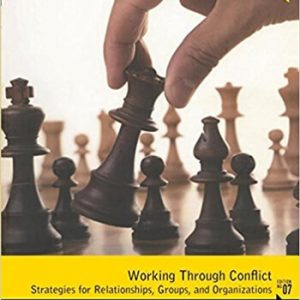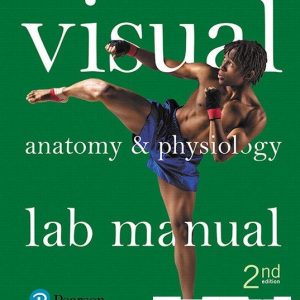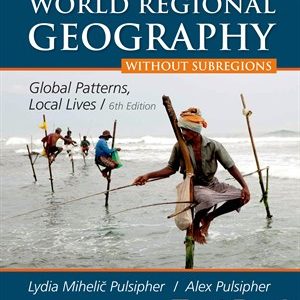This is completed downloadable of Test Bank for International Business, 2nd Edition, Michael Geringer, Jeanne McNett, Donald Ball

Product Details:
- ISBN-10 : 1260566218
- ISBN-13 : 978-1260566215
- Author: Michael Geringer, Jeanne McNett, Donald Ball
Empower students to develop their global mindset! Up-to-date, relevant and engaging, Geringer: International Business 2e provides a flexible, modular format for instructors along with student-focused features that make the study of IB personally relevant for every student!
Table of Content:
- Module 1: The Challenging Context of International Business
- What Is International Business and What Is Different about It?
- The Influence of External and Internal Environmental Forces
- The Domestic Environment
- The Foreign Environment
- The International Environment
- Is Internationalization of Business a New Trend, and Will It Continue?
- The Growth of International Firms and International Business
- Expanding Number of International Companies
- Foreign Direct Investment and Exporting Are Growing Rapidly
- What Is Driving the Internationalization of Business?
- Political Drivers
- Technological Drivers
- Market Drivers
- Cost Drivers
- Competitive Drivers
- What Are the Arguments for and against the Globalization of Business?
- Concerns with Globalization
- Arguments Supporting Globalization
- Summary
- Key Terms
- Critical Thinking Questions
- Research Task
- Minicase
- Notes
- Module 2: International Trade and Investment
- International Trade
- Volume of International Trade
- How Evenly Has Trade Grown?
- Which Nations Account for the Most Exports and Imports?
- Direction of Trade
- The Increasing Regionalization of Trade
- Major Trading Partners: Their Relevance for Managers
- Major Trading Partners of the United States
- Explaining Trade: International Trade Theories
- Mercantilism
- Theory of Absolute Advantage
- Theory of Comparative Advantage
- How Exchange Rates Can Change the Direction of Trade
- Some Newer Explanations for the Direction of Trade
- Summary of International Trade Theory
- Foreign Investment
- Portfolio Investment
- Foreign Direct Investment (FDI)
- Does Trade Lead to FDI?
- Explaining FDI: Theories of International Investment
- Monopolistic Advantage Theory
- Strategic Behavior Theory
- Internalization Theory
- Dynamic Capabilities Theory
- Eclectic Theory of International Production
- Summary
- Key Terms
- Critical Thinking Questions
- Research Task
- Minicase
- Notes
- Module 3: Sociocultural Forces
- What Is Culture and Why Is It Important?
- Culture Affects All Business Functions
- Marketing
- Human Resources
- Production and Procurement
- Accounting and Finance
- Preferred Leadership Styles
- How Culture Shows Itself
- Aesthetics
- Religion
- Material Culture
- Language
- Societal Organization
- Special Focus: Gift Giving in Business
- Culture Frameworks
- Hall’s High and Low Context
- Kluckhohn and Strodtbeck’s Cultural Orientations Framework
- Hofstede’s Six Dimensions
- Trompenaars’s Seven Dimensions
- When Does Culture Matter? The Global Mind-Set
- Going Forward: Cultural Paradoxes and a Caution
- Rules of Thumb for Managers Doing Business across Cultures
- Summary
- Key Terms
- Critical Thinking Questions
- Research Task
- Minicase
- Notes
- Module 4: Sustainability and Natural Resources
- Sustainability in the Business Context
- Systems for Achieving Sustainability
- Life Cycle Assessment
- Cradle-to-Cradle Design
- Tools for Measuring Sustainability
- United Nations Global Compact
- Global Reporting Initiative
- Carbon Disclosure Project
- Footprinting
- Characteristics of Environmentally Sustainable Business
- Limits as Part of the Sustainability Context
- Interdependence as Part of the Sustainability Context
- Equity in Distribution as Part of the Sustainability Context
- The Stakeholder Model for Sustainable Business
- Geography: Describing Our Natural Capital
- Location: Political and Trade Relationships
- Topography
- Climate
- Natural Resources
- Nonrenewable Energy Sources
- Renewable Energy Sources
- Nonfuel Minerals
- Summary
- Key Terms
- Critical Thinking Questions
- Research Task
- Minicase
- Notes
- Module 5: Political Forces That Affect Global Trade
- Governments and the Ownership of Business
- Nationalization: Why Governments Get Involved
- Privatization: Why Governments Sell Businesses
- Government Stability and Protection
- Stability: Issues with Lack of Peace and Predictability
- Protection from Unfair Competition
- Protection from Terrorism, Cybercrime, and Other Threats
- Country Risk Assessment and Countermeasures to Threats
- Government Intervention in Trade
- Reasons for Restricting Trade
- Tariff Barriers
- Nontariff Barriers
- Summary
- Key Terms
- Critical Thinking Questions
- Research Task
- Minicase
- Notes
- Module 6: Intellectual Property Rights and Other Legal Forces
- Types of Legal Systems
- Civil Law
- Common Law
- Religious Law
- International Legal Forces
- Rule of Law
- What is International Law?
- Sources of International Law
- General Legal Concerns in Global Business
- Extraterritoriality
- Performance of Contracts
- Litigation
- Intellectual Property Rights
- Patents
- Trademarks
- Trade Names
- Copyrights
- Trade Secrets
- Standardizing Laws Around the World
- Some Specific National Legal Forces
- Competition Laws
- Trade Obstacles
- Tort Law
- Miscellaneous Laws
- Foreign Corrupt Practices Act
- Accounting Law
- Summary
- Key Terms
- Critical Thinking Questions
- Research Task
- Minicase
- Notes
- Module 7: Economic and Socioeconomic Forces
- International Economic Analyses
- Levels of Economic Development
- Dimensions That Describe the Economy and Their Relevance for International Business
- Measuring the Size of an Economy
- Economic Growth Rate
- Income Distribution
- Private Consumption
- Unit Labor Costs
- Other Economic Dimensions
- Socioeconomic Dimensions of the Economy and Their Relevance for International Business
- Total Population
- Age Distribution
- Population Density and Distribution
- Other Socioeconomic Dimensions
- Summary
- Key Terms
- Critical Thinking Questions
- Research Task
- Minicase
- Notes
- Module 8: The International Monetary System and Financial Forces
- The International Monetary System: A Brief History
- The Gold Standard
- The Bretton Woods System
- The Central Reserve/National Currency Conflict
- The Floating Currency Exchange Rate System
- Current Currency Arrangements
- The Bank for International Settlements
- Financial Forces: Fluctuating Currency Values
- Fluctuating Currency Values
- Why Foreign Currency Exchange Occurs
- Exchange Rate Quotations and the FX Market
- Causes of Exchange Rate Movement
- Exchange Rate Forecasting
- Financial Forces Governments Can Exert
- Currency Exchange Controls
- Taxation
- Inflation and Interest Rates
- Balance of Payments
- Summary
- Key Terms
- Critical Thinking Questions
- Research Task
- Minicase
- Notes
- Module 9: International Competitive Strategy
- What Is International Strategy, and Why Is It Necessary?
- Why Plan Globally?
- The Process of Global Strategic Planning
- Step 1: Analyze Domestic, International, and Foreign Environments
- Step 2: Analyze Corporate Controllable Variables
- Step 3: Define the Corporate Mission, Vision, and Values Statements
- Step 4: Set Corporate Objectives
- Step 5: Quantify the Objectives
- Step 6: Formulate the Competitive Strategies
- Regional Strategies for Competing Globally
- Step 7: Prepare Tactical Plans
- Strategic Plan Features and Implementation Facilitators
- Sales Forecasts and Budgets
- Facilitation Tools for Implementing Strategic Plans
- Performance Measures
- Kinds of Strategic Plans
- Time Horizon
- Level in the Organization
- Methods of Planning
- New Directions in Planning
- Who Does Strategic Planning?
- How Strategic Planning Is Done
- Contents of the Plan
- Summary
- Key Terms
- Critical Thinking Questions
- Research Task
- Minicase
- Notes
- Module 10: Organizational Design and Control
- How Does Organizational Design Impact International Companies?
- Evolution of International Company Structure
- International Division Structure
- International Product Structure
- Geographic Region Structure
- Global Functional Structure
- Hybrid Organizational Structures
- Matrix Organizations
- Matrix Overlay
- Strategic Business Units
- Current Organizational Trends
- Requirements for the Future of International Companies
- Where Decisions Are Made in Wholly Owned Subsidiaries
- Standardization of the Company’s Products and Equipment
- Competence of Subsidiary Management and Headquarters’ Reliance on It
- Size and Age of the IC
- Headquarters’ Willingness to Benefit the Enterprise at the Subsidiary’s Expense
- The Subsidiary’s Frustration with its Limited Power
- Where Decisions Are Made in Joint Ventures and Subsidiaries Less Than 100 Percent Owned
- Loss of Freedom and Flexibility
- Control Can Be Had Even with Limited or No Ownership
- Reporting
- Financial Reporting
- Technological Reporting
- Reporting about Market Opportunities
- Political and Economic Reporting
- Summary
- Key Terms
- Critical Thinking Questions
- Research Task
- Minicase
- Notes
- Module 11: Global Leadership Issues and Practices
- The Global Mind-Set
- Global Leadership: What It Is and Why It Matters
- How Global Leadership Differs from Domestic Leadership
- The Challenge of Finding Global Leaders with the “Right Stuff”
- What Competencies Are Required for Effective Global Leadership?
- Selecting and Developing Effective Global Leaders
- Assessing Global Leadership Competencies
- Models for Developing Global Leaders
- Tools and Techniques for Developing Global Leadership Skills
- Leading Global Teams
- Leading Teams
- Complexity for Teams in the Global Context
- Global Team Leadership and Culture
- Virtual and Geographically Dispersed Teams
- Performance Management in Global Teams
- Leading Global Change
- Change Models
- Change and Culture
- Summary
- Key Terms
- Critical Thinking Questions
- Research Task
- Minicase
- Notes
- Module 12: International Markets: Assessment and Entry Modes
- Market Screening Approaches and Techniques
- Initial Screening—Basic Needs Potential
- Second Screening—Financial and Economic Forces
- Third Screening—Political and Legal Forces
- Fourth Screening—Cultural Forces
- Fifth Screening—Competitive Forces
- Final Selection of New Markets
- Segment Screening
- Trade Missions and Trade Fairs
- Research in the Local Market and as Practiced
- What Methods Are Available for Entering Foreign Markets?
- Nonequity Modes of Entry
- Equity-Based Modes of Entry
- Summary
- Key Terms
- Critical Thinking Questions
- Research Task
- Minicase
- Notes
- Module 13: Marketing Internationally
- Differences between Domestic and International Trade
- The Marketing Mix
- Standardize, Adapt, or Start From Scratch?
- Product Strategies
- Modifying Types of Products
- Industrial Products
- Consumer Products
- Services
- Foreign Environmental Forces
- Promotional Strategies
- Advertising
- Media Availability and Internet Advertising
- Type of Product
- Foreign Environmental Forces
- Neither Purely Global nor Purely Local
- Personal Selling
- Sales Promotion
- Public Relations
- Pricing Strategies
- Standardizing Prices
- Foreign National Pricing
- International Pricing
- Distribution Strategies
- Standardizing Distribution
- Foreign Environmental Forces
- Summary
- Key Terms
- Critical Thinking Questions
- Research Task
- Minicase
- Notes
- Module 14: Managing Human Resources in an International Context
- Worldwide Labor Conditions
- Overall Size of the Workforce
- Aging of Populations
- Urbanization of Workforce
- Immigrant Labor
- Guest Workers
- Brain Drain
- Labor Unions
- The Strategic Approach to International Human Resource Management
- Recruitment and Selection of Employees
- Ethnocentric Staffing Policy
- Polycentric Staffing Policy
- Regiocentric Staffing Policy
- Geocentric Staffing Policy
- Training and Development of Employees
- Home- or Parent-Country National
- Host-Country National
- Third-Country National
- Expatriates
- The Expatriate’s Family
- Preparation for the Transition: Language Training
- Expatriate Services
- Repatriation—The Shock of Returning Home
- Compensation for International Assignments
- Salaries
- Allowances
- Bonuses
- Compensation Packages Can Be Complicated
- Compensation of Third-Country Nationals
- International Status
- Perks
- What’s Important to You?
- Summary
- Key Terms
- Critical Thinking Questions
- Research Task
- Minicase
- Notes
- Module 15: International Accounting and Financial Management
- Accounting and Foreign Currency
- The Purpose of International Accounting
- Foreign Currency Transactions
- Foreign Currency Consolidation: Translation and Functional Currency
- International Accounting Standards on the Path of Convergence
- Accounting and Culture
- Triple-Bottom-Line Accounting
- International Financial Management: Capital Structure of the Firm
- International Financial Management: Cash Flow Management
- Why Funds Are Moved and Useful Techniques for Moving Them
- International Finance Center
- Multilateral Netting
- Leading and Lagging
- Foreign Exchange Risk Management
- Transaction Exposure
- Translation Exposure
- Economic Exposure
- Taxation
- Summary
- Key Terms
- Critical Thinking Questions
- Research Task
- Minicase
- Notes
- Bonus Module A: International Institutions from a Business Perspective
- What Are Institutions, and Why Are They Useful?
- Institutional Theory
- Types of Institutions
- The United Nations
- General UN Support of Business
- Direct UN Impact on Business
- UN Organization
- International Monetary Institutions
- International Monetary Fund
- The World Bank
- World Development and Trade Organizations
- Organisation for Economic Co-operation and Development (OECD)
- World Trade Organization
- Economic Integration Agreements
- Free Trade Area
- Common Market
- Economic Integration
- Examples of Economic Integration Agreements
- Summary
- Key Terms
- Critical Thinking Questions
- Research Task
- Minicase
- Notes
- Bonus Module B: Export and Import Practices
- Sources of Export Information, Counseling, and Support
- Mistakes Made By New Exporters
- Export Marketing Plan
- Incoterms, Pricing, Terms of Sale, and Payment
- Incoterms
- Pricing
- Terms of Sale
- Export Payment Procedures
- Export Financing
- Export Procedures and Export Documents
- Export Shipments
- Importing
- Sources for Imports
- Customhouse Brokers
- Import Duties
- Summary
- Key Terms
- Critical Thinking Questions
- Research Task
- Minicase
- Sample Outline for an Export Marketing Plan
- Notes
- Bonus Module C: Global Operations and Supply Chain Management
- Managing Global Supply Chains
- Design of Products and Services
- Sourcing Globally
- Reasons for Sourcing Globally
- Global Sourcing Arrangements
- Importance of Global Sourcing
- The Increasing Use of Electronic Purchasing for Global Sourcing
- Manufacturing Systems and Logistics
- Advanced Production Techniques Can Enhance Quality and Lower Costs
- Logistics and Supply Chains
- Standardization and the Management of Global Operations
- Benefits of Standardization of Global Operations
- Impediments to Standardization of Global Operations
- Some Design Solutions
- Summary
- Key Terms
- Critical Thinking Questions
- Research Task
- Minicase
- Notes
- Glossary
- Company Name Index
- Subject Index





